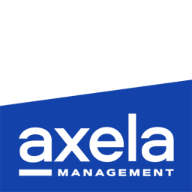For landlords and property investors, mastering rent collection practices is essential to running a profitable and professional rental operation. One area that frequently confuses and can lead to tenant dissatisfaction or disputes is prorated rent.
Whether you're onboarding a new tenant mid-month or adjusting a lease term, accurately calculating prorated rent is a vital skill. In this guide, we’ll walk you through what prorated rent means, how to apply it, and why it’s a smart move for both you and your tenants.
We’ll also explore best practices for integrating prorated rent into your property management process and how it aligns with clear, professional leasing practices.
What Is Prorated Rent?
Prorated rent refers to a rent amount that’s adjusted based on the number of days a tenant occupies a rental property during a given billing cycle. Instead of paying the full month’s rent, the tenant pays a portion of rent that corresponds to the days occupied in the unit.
For example, if a tenant’s move-in date is on the 10th of the month, instead of charging them for the entire month, you would calculate the rent from the 10th to the end of the month.
This approach ensures tenants pay a fair amount for their daily rental rate, reduces misunderstandings, and sets a professional tone from the beginning of the lease agreement.
When to Use Prorated Rent
There are several key scenarios where prorated rent applies:
- Mid-month move-ins or move-outs
- Short-term leases or non-standard lease start or end dates
- Maintenance or renovation delays that prevent full-month occupancy
- Flexible move-in scheduling
In each case, prorating rent ensures tenants only pay for the days they reside in the unit, reinforcing fair billing practices.
How to Calculate Prorated Rent
To calculate prorated rent, follow this simple formula:
- Determine the total monthly rent.
- Divide the monthly rent by the number of days in the month (or use a standard 30-day method).
- Multiply the daily rent by the number of days the tenant will occupy the unit.
Method 1: Actual Number of Days in the Month
- Monthly Rent: $1,800
- Days in Month: 31
- Daily Rate: $1,800 ÷ 31 = $58.06
- Days Occupied: 21
- Prorated Rent Amount: $58.06 × 21 = $1,219.26
Method 2: Banker’s Month (30-Day Standard)
- Monthly Rent: $1,800
- Daily Rate: $1,800 ÷ 30 = $60
- Days Occupied: 21
- Prorated Amount: $60 × 21 = $1,260
Which Method Should You Use?
Your rental agreement should clearly state the chosen method to avoid confusion. Some landlords prefer the simplicity of a 30-day month, while others opt for accuracy with actual day counts, especially during leap years or in February.
Legal and Lease Considerations
Even if local laws don’t require prorated rent, it’s widely accepted as a fair and professional practice. The key is to ensure that your lease or rental agreement explicitly outlines:
- The method used to calculate daily rent
- How prorated rent will be determined for partial months
- When payments are due and how they’ll be adjusted
This clarity protects both you and your tenant, reinforcing transparent communication and avoiding disputes over rent payments.
Benefits of Prorated Rent
For Landlords:
- Shows fairness and builds trust
- Simplifies rent adjustments for partial month stays
- Helps fill vacancies quicker by allowing flexible move-in days
For Tenants:
- Only pay for time spent in the unit
- Less financial pressure during the first month
- Confidence in transparent and fair monthly rent practices
Common Mistakes to Avoid
- Leaving prorating terms out of the lease
- Miscalculating due to rounding or incorrect day counts
- Failing to explain the prorated rent calculation clearly
- Ignoring billing cycle alignment when tenants change dates
Use a prorated rent calculator to ensure consistency and accuracy, and always provide written documentation for any final prorated amount.
Best Practices for Landlords
- Please include it in the lease: Specify how prorated rent is calculated and the conditions under which it applies.
- Use a precise formula: Whether it’s a 30-day month or actual days, consistency matters.
- Communicate clearly: Provide a written step-by-step guide for how you arrive at the prorated amount.
- Document every adjustment: Keep detailed records of the date, rent amount, and calculations used to ensure accuracy.
- Automate with software: Property management tools streamline the process, especially for multiple units.
Why Prorated Rent Reflects Professionalism
Modern tenants expect transparency and fairness. When you take the time to calculate prorated rent correctly, explain the process, and bill accurately, it sets a tone of professionalism and care. It also helps avoid friction down the line, particularly during move-out dates, lease renewals, or early terminations.
At Axela Management, we help landlords implement consistent rent policies, streamline their leasing operations, and manage tenant expectations from day one. Our tools and strategies remove the guesswork from rent calculations, making property ownership more efficient and profitable.
Frequently Asked Questions (FAQs)
1. Do I have to prorate rent if a tenant moves in during the middle of the month?
While it may not be legally required in all areas, it is widely considered best practice to pay prorated rent based on the number of days occupied.
2. Can tenants request prorated rent?
Yes. Requesting prorated rent is common, and it's a good sign that a tenant is organized and communicative.
3. Should I use 30 days or actual days to calculate rent?
Either works as long as it's clearly outlined in your lease agreement. Consistency is key.
4. How does prorated rent affect the due date?
Typically, the due date remains the same, but the first month or last day of rent may be adjusted using a prorated calculation.
5. What tools can help me calculate prorated rent?
There are many reliable prorated rent calculators available online, or you can use property management software for automatic adjustments based on the move-in date and rent amount.
Take the Guesswork Out of Rent with Axela Management
Whether you’re managing a handful of units or scaling a full portfolio, knowing how to handle prorated rent correctly sets you apart as a professional, fair, and savvy landlord. It not only keeps tenants happy but also ensures your revenue expectations are aligned and your documentation is sound.
Let Axela Management help you streamline every aspect of property management from tenant screening and rent collection to maintenance scheduling and lease administration.
👉 Explore Our Services
👉 Contact Our Team Today


